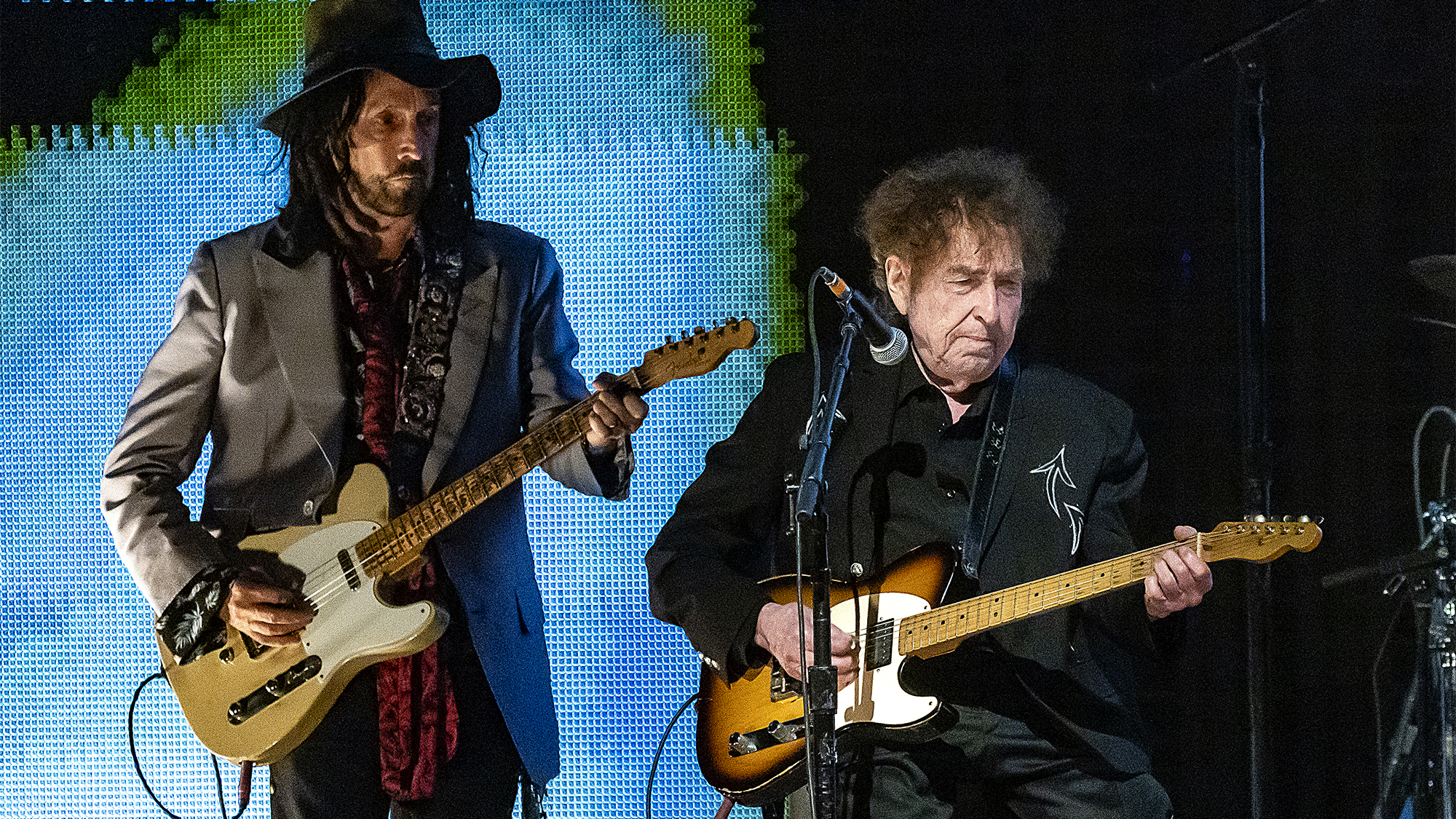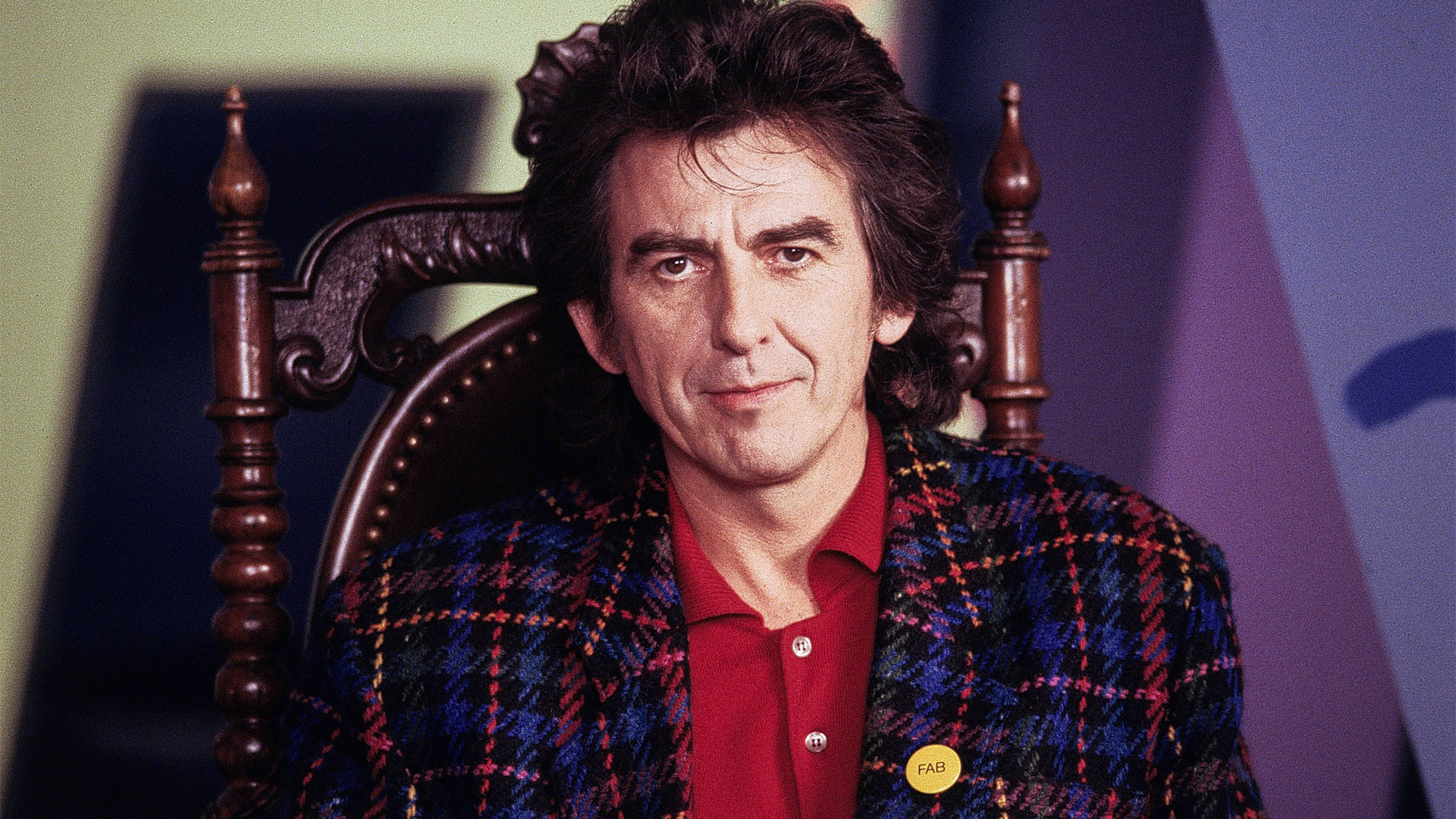“He says, ‘You mean it won’t follow me? Well, what good is it?’” Mike Campbell says his collaboration with Bob Dylan ended when his hit-making studio technology left the folk-rocker mystified
Dylan was smitten with Campbell's LinnDrum and thought it held the secret to creating a chart-topping song as he returned to secular music in the 1980s

There’s an obvious reason Mike Campbell called his memoir Heartbreaker. Over his career, he’s been most famous for his work with Tom Petty and the Heartbreakers, where he served as both guitarist and co-writer on many of Petty’s hits.
But for much of that time, Campbell enjoyed a career apart from the Heartbreakers. In 1981, he made one of his first forays outside the group as a sideman to Stevie Nicks when she cut Bella Donna, her monster-selling solo debut away from her gig with Fleetwood Mac. Other projects would follow with the Spinners and Dwight Twilley.
But the guitarist made his first significant stand as a songwriter in his own right in 1984 when he co-wrote “The Boys of Summer” with Don Henley, who was cutting his second solo effort following the premature demise of Eagles.
As Campbell explained to Guitar Player, the song took shape with the help of a synthesizer and a LinnDrum drum machine. The LinnDrum was the second such unit produced by Linn Electronics, which pioneered the use of acoustic drum samples in a programmable rhythm machine in the early 1980s.
The LinnDrum was a big step forward in Campbell’s studio arsenal. Prior to owning it, he wrote songs by creating drum loops off records and writing atop them.
“I wrote ‘Refugee’ to a drum loop I got off of a record. ‘Here Comes My Girl’ I wrote to a drum loop,” he said of composing two of Petty’s biggest early hits. “I didn't have a drummer in my demo studio at home, so I would make drum loops before there were drum machines. That was just business as usual.
“Now I had this machine that will do the drum loop for me, but I could program it any way I wanted. I was just having fun with it.”
All the latest guitar news, interviews, lessons, reviews, deals and more, direct to your inbox!
The news about Campbell’s LinnDrum magic quickly spread, bringing him attention from an unlikely artist: Bob Dylan. The guitarist had just competed 1983’a Infidels, the Mark Knopfler–produced album that marked his return to secular music following three records inspired by his experience as a born-again Christian. After Campbell's success with "The Boys of Summer," Dylan enlisted him as he went to work on 1985’s Empire Burlesque.
Dylan was thrilled by “The Boys of Summer” and told Campbell he would like a hit as well. As Campbell recalled to Vulture.com, the folk-rocker was fixated on the idea that he had used a drum machine on the song and thought that might be the secret to recording a hit.
“I was at a session one day and he told me, ‘Wow, “The Boys of Summer” is a big hit. Did you use the drum machine on that? Do you still have it?’ I said, ‘Yeah.’
"And he went, ‘Could you bring it down tomorrow? I’d like to have a hit, too.’”
Dylan was no doubt impressed by Campbell’s songwriting talent. But he also assumed the guitarist had a magic touch with the LinnDrum, or else why not buy one of his own?
"In his mind, I’m the same guy who did it," Campbell says, "so it would work for him."
After a few minutes Bob and the engineer look over at me, and Bob goes, ‘That doesn’t sound right.’ He looked at me like it’s my fault.”
— Mike Campbell
Campbell brought the drum machine to a session, but as he explains, Dylan couldn’t understand the most fundamental aspect of using it, or any rhythm box for that matter: It's the machine that sets the beat.
“He didn’t play along with the drum machine and got frustrated,” Campbell says. “I don’t know how he didn’t comprehend that. He was playing freestyle.
“After a few minutes Bob and the engineer look over at me, and Bob goes, ‘That doesn’t sound right.’
"He looked at me like it’s my fault.”
Once Campbell explained the protocol, Dylan was taken aback.
“And he responds, ‘You mean it won’t follow me? Well, what good is it?’
“He was dead serious.”

Campbell put the misunderstanding down to the guitarist’s unique perspective and approach to music. Despite having the world’s greatest drummers at his beck and call, he felt he needed the drum machine to create a hit — but only if it could follow him.
“It’s a thin line between child and genius,” Campbell concludes. “I love the guy.”
Campbell recalled yet another time when he and Dylan attempted unsuccessfully to write together. Dylan is famous for his insightful, inspired poetic lyrics.
Despite this, “The first thing he said was, ‘Do you have any lyrics?’” Campbell recalls. “I’m not joking. It was hilarious. I had never written a lyric in my life. That was a big deal, even if the song never worked out.”
Campbell and Dylan’s paths would continue to cross, both in the studio and in his career with the Heartbreakers, who toured with the folk-rock legend on the True Confessions Tour in 1986. Campbell came “this close” to performing with Dylan on “Handle With Care,” the 1988 breakout hit from the Traveling Wilburys, the late-1980s supergroup featuring Dylan, Petty, George Harrison, Jeff Lynne and Roy Orbison.
As Campbell revealed to Rolling Stone, he cut the song’s original slide guitar solo, only to suggest Harrison try it instead — which he did, resulting in the tune’s indelible lead guitar break.
The first thing he said was, ‘Do you have any lyrics?' I had never written a lyric in my life."
— Mike Campbell
“I thought — because I was intimidated, you know, I'm sitting there with George and Jeff — ‘Okay, I'll try something,’” Campbell explained. “That wasn't my best, but I had a hunch that he could pull something out with the slide that would be more in the soul of the song, which he did.
“I just handed him the guitar, I had handed him a slide. The amp was already set up, and he just did it. Took the pressure off me!”
In addition to celebrating the release of his memoir, Campbell recently collaborated with Fender on two reproductions of his famous "Red Dog" Telecaster, the guitar behind "Refugee." The instrument is offered as a Custom Shop limited-edition model and as a Fender Stories Collection edition.
Christopher Scapelliti is editor-in-chief of GuitarPlayer.com and the former editor of Guitar Player, the world’s longest-running guitar magazine, founded in 1967. In his extensive career, he has authored in-depth interviews with such guitarists as Pete Townshend, Slash, Billy Corgan, Jack White, Elvis Costello and Todd Rundgren, and audio professionals including Beatles engineers Geoff Emerick and Ken Scott. He is the co-author of Guitar Aficionado: The Collections: The Most Famous, Rare, and Valuable Guitars in the World, a founding editor of Guitar Aficionado magazine, and a former editor with Guitar World, Guitar for the Practicing Musician and Maximum Guitar. Apart from guitars, he maintains a collection of more than 30 vintage analog synthesizers.

